When it comes to car ownership, a dent can feel like a personal affront to your vehicle’s beauty. Whether it’s a minor door ding or damage from an unexpected hailstorm, dealing with these imperfections is part of life on the roads. Luckily, if you’re in Houston, you have plenty of affordable options for getting those pesky dents fixed without breaking the bank. This guide will walk you through everything you need to know about professional dent repair services in the area, helping you make informed choices that keep your car looking its best while keeping your wallet happy. Let’s dive in!
In Houston, you can find professional paintless dent repair (PDR) services that restore your vehicle’s body without damaging its original paint. At Dent Werx, we offer convenient mobile PDR services, including door ding repair, hail damage repair, and classic car dent repair, all performed by experienced technicians who prioritize customer satisfaction.
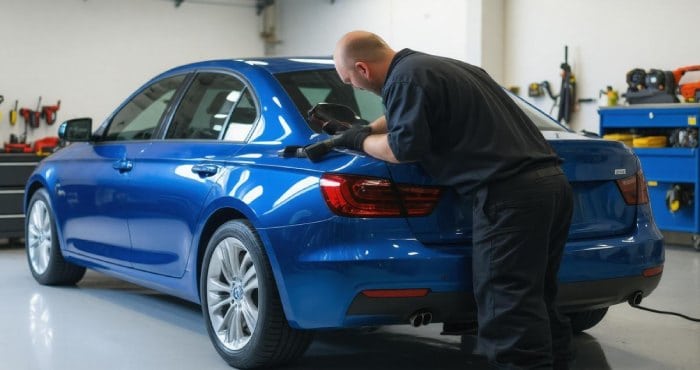
Top Car Dent Repair Shops in Houston
Houston boasts a variety of reputable car dent repair shops, each providing unique services that cater to different customer needs. Among these, Dent Werx Paintless Dent Repair quickly emerges as a top choice. With over 120 five-star reviews on platforms like Google, this shop couples affordability and professionalism with over ten years of industry experience. Their paintless dent repair (PDR) method stands out not only for its cost-effectiveness but also for preserving your vehicle’s original paint and finish.
In contrast, there’s FixMyCar, which has gained popularity for their speedy turnaround times and mobile services that deliver convenience right to your doorstep. This means no need to wait at a shop—technicians come wherever you are! However, customers should be cautious; while this service is convenient, urgent requests sometimes incur additional costs that may not fit everyone’s budget.
Shifting the focus slightly to those who prefer comprehensive auto care; that’s where Texan Auto Repair comes into play.
Specializing in traditional auto body repair, Texan Auto Repair doesn’t just stop at fixing dents; they also assist with the entire insurance claims process should you need it. Their familiarity with various automobile issues allows them to provide a more integrated service experience. For those looking for thorough care in addition to dent repairs, this shop offers a reliable option.
And we cannot overlook H-Town Dent Repair, renowned for its meticulous attention to detail. High-end vehicle owners often choose H-Town because they understand that luxury cars require special treatment. The care given here reflects in their exceptional customer service, ensuring that every customer feels valued. Whether through a simple door ding fix or more complex repair work, their goal is to restore your vehicle back to pristine condition seamlessly.
Now that we’ve highlighted some notable shops in Houston, it’s essential to explore why utilizing specialized services can impact the quality of your repairs.
Importance of Professional Services
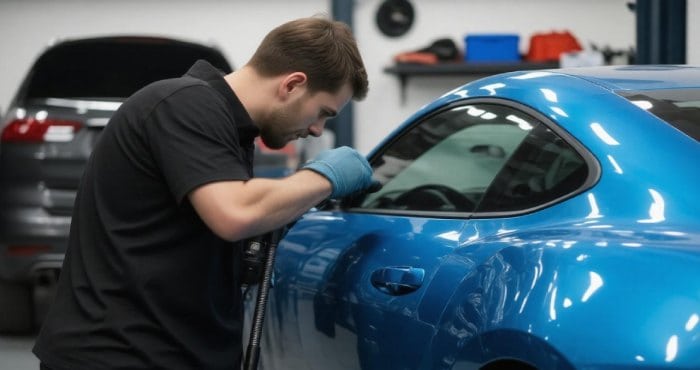
When it comes to car dent repair, seeking professional services is not just about convenience; it’s fundamentally about preserving the integrity and longevity of your vehicle. Imagine your car as your second largest investment after your home; maintaining its appearance is crucial for both aesthetic appeal and resale value.
Expert technicians have specialized training, allowing them to handle repairs with precision. This ensures that not only will your vehicle look great, but it will remain structurally sound as well.
Professional services, such as those offered by Dent Werx, leverage over a decade of experience to deliver top-notch paintless dent repair (PDR). Unlike traditional methods that often involve painting or bodywork, PDR maintains your car’s original finish while treating dents right at their source. This method avoids potential paint mismatches, which can detract from a vehicle’s visual appeal and overall market value.
It’s important to note that these professionals use high-quality tools specifically designed for each job.
For example, they utilize specialized rods and techniques that minimize damage to the surrounding areas while maximizing the repair’s effectiveness. This leads to a more aesthetically pleasing finish and reaffirms the vehicle’s structural integrity—essential for safety on the roads. If a dent repair is performed incorrectly or neglected altogether, it can lead to problems down the line, including rusting or further deterioration.
“Investing in professional repairs will save you money in the long run by avoiding costlier damages.”
Furthermore, opting for mobile PDR services means the experts come directly to you. Whether you’re at home or at work in Houston or nearby areas including Tomball or The Woodlands, Dent Werx provides convenient repairs that fit around your schedule. This added flexibility allows you to maintain productivity while knowing that your vehicle is being cared for properly without having to rearrange your life.
Trusting professionals with dent repairs allows you to make informed decisions that will protect both your vehicle’s physical appearance and its monetary value. As we look into better understanding what affects pricing, you’ll gain insight into how quality services align with worth in this industry.
Costs and Factors Affecting Pricing
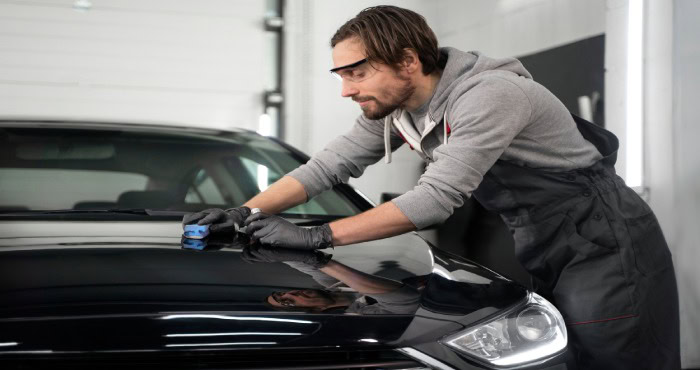
The cost of dent repair services can indeed vary widely due to several influencing factors, making it essential to understand what contributes to pricing before committing to a service.
One of the primary aspects that directly impacts cost is dent size. Larger dents naturally require more labor and time to repair, which translates into higher costs. For instance, a tennis-ball-sized dent will need significantly more work than a nickel-sized one, leading you to see a noticeable difference in repair quotes.
Similarly, the location of the dent plays a crucial role in determining the final price. Dents located in hard-to-reach places—such as underneath fenders or near electrical components—may require specialized tools or techniques, thus raising the overall cost due to the extra effort involved. Knowing this, it’s wise to consider where your dent is before initiating any repair process.
Another critical factor is the severity of damage. Dents that come with creases or have chipped paint tend to be more complex and consequently expensive to fix. These situations often require not only removing the dent but also repairing or repainting damaged surfaces afterward. When assessing your situation, take note of the extent of damage; it could save you from unexpected expenses later on.
You might also find that the repair method chosen can greatly influence pricing. For example, Paintless Dent Repair (PDR) typically offers a more cost-effective solution compared to traditional dent methods because it doesn’t involve repainting or extensive bodywork. However, it’s essential to recognize that PDR isn’t suitable for every type of dent—especially those that include significant paint damage or severe creasing.
Furthermore, labor rates can differ from shop to shop across Houston, Texas. While some shops may charge higher rates based on reputation or experience, it’s important to remember that these costs do not always correlate with superior quality service. This emphasizes the importance of doing your homework by reading reviews and asking for recommendations from friends or family members who have previously experienced dent repairs.
Finally, don’t overlook how insurance can come into play when dealing with dent repair costs. Depending on your policy, insurance coverage may significantly affect out-of-pocket expenses and potentially offer you a way to offset the price of repairs if they qualify under your plan.
With these insights into how various factors impact pricing for dent repair services, you’re well-prepared to navigate your options effectively as you move forward with your vehicle repair journey.
Choosing the Right Repair Shop
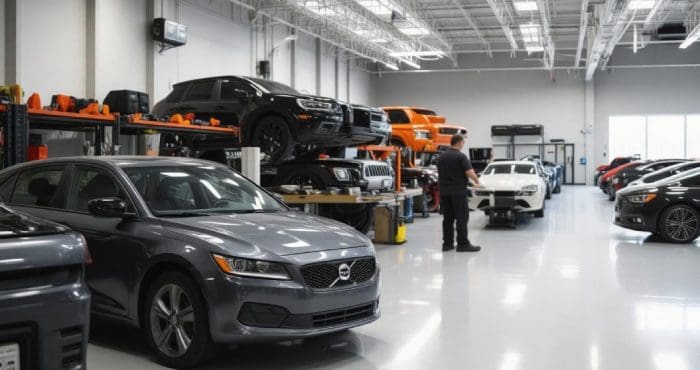
When it comes to selecting a paintless dent repair shop, you want to ensure you’re making an informed choice. It all starts with thorough research.
Step-by-Step Guide:
Begin your journey by exploring online reviews and ratings. Platforms like Google and Yelp can be goldmines of information, providing insights from real customers who have experienced the services firsthand. Pay close attention to shops with consistent positive feedback across multiple reviews—this is often a strong indicator of reliable service. Additionally, look for photographs showcasing before-and-after work; they provide invaluable glimpses into the technician’s skill level.
Beyond online presence, reach out to friends, family, or colleagues who have had similar repairs carried out. They can offer trustworthy recommendations based on their experiences. Word-of-mouth referrals often come with stories about service quality that you may not find online, giving you a complete picture of what to expect.
Once you’ve narrowed down your list, consider visiting the shops in person. Just stepping through their doors can tell you a lot; observe how clean and organized the workspace is, and gauge how welcoming and knowledgeable the staff appears. A professional environment often reflects the quality of their work.
While evaluating potential shops, consider how transparent they are about pricing and service timelines. The best repair shops will provide free estimates upfront and ensure you understand your options without any hidden fees. This transparency not only builds trust but also fosters a good relationship, invaluable for important vehicle repairs.
Furthermore, inquire about their certifications and experience in paintless dent repair. For instance, at Dent Werx in Houston, our technicians possess over ten years of industry experience and have been trained by leading experts in PDR techniques. This level of expertise ensures that vehicles receive the highest quality care while preserving the original paint finish.
Lastly, choose a shop that emphasizes customer satisfaction—look for those who prioritize this value through promises like “no charge if you aren’t satisfied.” This commitment to excellence ensures attentive service and quality workmanship every time.
By following these guidelines, you’ll be well-prepared to select a shop that not only meets your needs but also provides an exceptional level of care for your vehicle.
Paintless Dent Repair Benefits
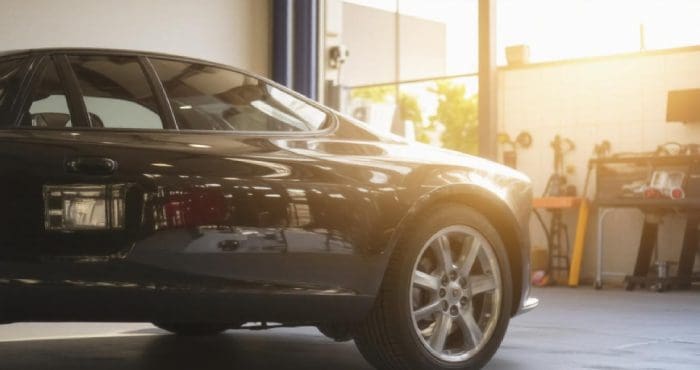
One of the most compelling advantages of PDR is its cost-effectiveness compared to traditional repair methods. Traditional repairs often involve body filler and multiple stages of painting, which can inflate costs significantly. In contrast, PDR can save you money because it requires less labor and materials—sometimes cutting repair costs in half. Imagine being able to restore your vehicle’s appearance without breaking the bank; that’s essentially what PDR offers.
“Paintless Dent Repair not only helps you save money but also keeps your vehicle looking its best without compromising quality.” – Kevin Buckner, Owner of Dent Werx
Another major advantage is the time-saving aspect of PDR. While conventional repairs might take several days due to the processes involved, PDR can often be completed in just a few hours. This efficiency is particularly valuable for busy individuals who rely on their vehicles daily. Picture this: you drop off your car at your convenience during your lunch break and return to find it dent-free without any disruption to your schedule.
Preserving the original paint is another significant benefit. When opting for PDR, you’re ensuring that the factory finish remains intact. Traditional methods typically require sanding and repainting, which can lead to mismatched colors and compromised resale values. By retaining the original paint, PDR enhances the aesthetic appeal of your vehicle while protecting its worth—something every car owner appreciates.
Additionally, the environmental impact of using PDR should not go unnoticed. In an era where eco-friendliness is increasingly important, opting for this method means avoiding harsh chemicals and paints used in traditional bodywork repair. With PDR, there are fewer pollutants released into the environment, making it a responsible choice for environmentally conscious consumers. It’s a win-win situation: you get your vehicle repaired while contributing positively to the planet.
Understanding these benefits is crucial as we look ahead to discover how to identify reputable providers that specialize in these services and ensure the work meets high standards.
Assessing Work Quality and Guarantees
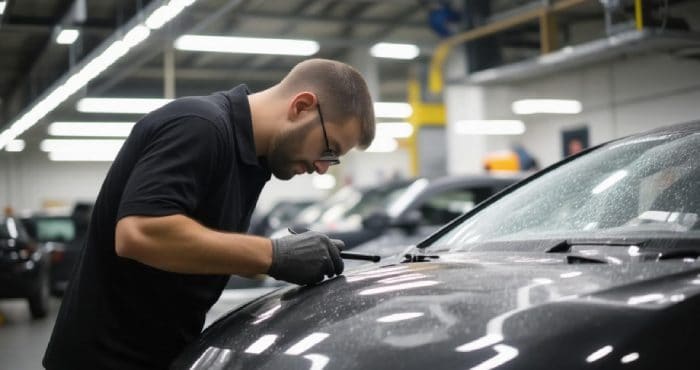
When it comes to paintless dent repair (PDR), understanding the quality of work provided is paramount, especially if you want to ensure that your vehicle is in good hands. It’s wise to pay attention not only to glowing reviews but also to the guarantees a shop provides. For instance, Dent Werx emphasizes a strong commitment to customer satisfaction; they provide a satisfaction guarantee, meaning if you’re not pleased with the results, there’s no charge. This kind of assurance signals confidence in their own work and gives you peace of mind, knowing you are making a safe investment in vehicle care.
One effective way to gauge a shop’s professionalism and quality is by asking about their technicians’ credentials. Certified technicians, like those at Dent Werx, typically have undergone extensive training in PDR techniques. They often have over ten years of experience in the industry and learn from leading experts, refining their skills over time. This level of expertise plays a significant role in ensuring that the repairs not only meet expectations but also maintain the integrity of your car’s original paint finish. A conversation about their background can be incredibly revealing and help instill confidence in their service.
After assessing qualifications and guarantees, we should look closely at customer experiences, which paint a picture of what you might expect when utilizing their services.
Take John D., for example; he has shared his satisfaction after his experience with Dent Werx, stating, “I was amazed at how flawless my car looked after the PDR. It was as if the dent was never there.” Feedback like this highlights the remarkable results one can expect when services are performed by skilled professionals who stand behind their work — a clear indication that you’re choosing wisely when selecting a repair service.
Additionally, consider checking for other forms of feedback such as social media reviews or community forums, where real customers share their genuine experiences. These insights can highlight consistent patterns regarding service quality and responsiveness which may not appear solely on formal review sites. Coupling these testimonials with robust guarantees will ensure you find a service provider committed to excellence in every repair made.
Having gained insights into qualifications and exceptional customer feedback, it’s now essential to dive into how clients feel about their overall experiences and the results they received from their chosen service providers.
Customer Reviews and Testimonials

Take, for instance, the glowing remarks from one satisfied customer, Sarah K., who noted, “The team at Dent Werx was professional and efficient. My car looks brand new after their repair.” This sentiment captures what many other clients feel after utilizing their services. It’s not just about getting the dents out; it’s about transforming a damaged vehicle back to its pristine state without compromising its original finish.
The proof of this dedication to excellence can be seen in Dent Werx’s impressive track record: over 120 five-star reviews on Google. Such numbers reflect the hard work and commitment to customer satisfaction that the team upholds day in and day out.
When you sift through these testimonials, a clear pattern emerges. Customers consistently highlight the quick response time—noting how technicians arrive punctually at their location—and the transparent pricing that eliminates guesswork. Clients appreciate knowing exactly what they’re paying for, which speaks volumes about Dent Werx’s dedication to honesty and integrity in business practices.
Furthermore, it’s evident that many reviews praise the friendly demeanor of the staff members. Being courteous and approachable contributes to an overall positive experience for customers as they navigate the sometimes stressful process of getting their vehicles repaired.
These consistent impressions highlight why opting for expert dent repair can enhance your experience, making the process seamless and enjoyable while ensuring your vehicle receives top-notch care. As we explore further, let’s look into how you can easily connect with the team for inquiries and receive complimentary estimates.
Contact Information and Free Estimates

When it comes to getting your vehicle back in tip-top shape, Dent Werx Paintless Dent Repair (PDR) makes it as easy as a phone call. You can reach them directly at +1-832-275-4374, where friendly technicians are always ready to assist you.
Whether you have a small door ding or extensive hail damage, they are equipped to handle it all with their mobile repair services, meaning they come straight to your location. This convenience is one of the many reasons why customers keep coming back.
Before calling, consider briefly describing your issue—such as the size of the dent, its location, or any other pertinent details. By doing this, you not only streamline the process but also enable the technicians to provide a more accurate estimate of both time and cost.
On top of providing swift service, Dent Werx also offers free estimates, allowing you to assess the financial aspect without any commitment or pressure. This means you can make an informed decision before proceeding with repairs.
For further convenience, visiting their website at Dent Werx allows you to read through numerous testimonials from satisfied clients who share their positive experiences. Moreover, there’s an option to book appointments directly online—a testament to how committed Dent Werx is to making your repair process as seamless and hassle-free as possible.
So whether you’re dealing with a minor annoyance or significant damage to your vehicle’s exterior, reaching out to Dent Werx ensures you’ll receive professional care tailored specifically for your needs.
With exceptional customer service and expertise in paintless dent repair, Dent Werx stands out as a reliable choice for anyone seeking efficient and affordable solutions in Houston.
What types of car dent repair methods are commonly used by professionals in Houston?

In Houston, professionals commonly use methods such as Paintless Dent Repair (PDR), traditional body shop repairs, and heat treatment techniques. PDR is particularly popular due to its efficiency and cost-effectiveness, as it preserves the original paint and can restore a car’s appearance in under an hour. Studies show that about 75% of minor dents can be effectively repaired using PDR, making it a preferred choice for both affordability and quality among local residents.
What are the average costs associated with car dent repair in Houston?
The average cost of car dent repair in Houston typically ranges from $100 to $500, depending on the size and severity of the damage. Minor dents can be repaired for as low as $75, while larger or more complex repairs may exceed $300. According to local industry statistics, about 70% of minor dents can be handled with paintless dent repair techniques, which are both efficient and cost-effective. Always consider getting multiple quotes and check for warranties on the work completed.
How can I find reputable auto body shops that specialize in dent repair in Houston?
To find reputable auto body shops specializing in dent repair in Houston, start by checking online reviews on platforms like Yelp or Google, where over 70% of consumers read reviews before visiting a business. Additionally, consider asking for recommendations from friends or family who have had similar services. It’s also wise to look for certifications from organizations such as the National Institute for Automotive Service Excellence (ASE) to ensure quality service. Lastly, don’t hesitate to request quotes and evaluate their customer service during the initial consultation.
What factors should I consider when choosing a car dent repair service in Houston?
When choosing a car dent repair service in Houston, consider factors such as reputation, experience, and pricing transparency. Look for reviews and ratings, as 70% of consumers trust online reviews as much as personal recommendations. Ensure the technicians have certifications or training in paintless dent repair (PDR), which can maintain your car’s value by preserving the original paint. Finally, inquire about warranties on the service to protect your investment; a reputable shop will often provide guarantees, indicating confidence in their work quality.
Are there any DIY options for fixing minor dents on my car without professional help?
Yes, there are several DIY options for fixing minor dents in your car, such as using a hairdryer to heat the dent and then applying aluminum foil with dry ice to create a quick temperature change that may pop the dent out. According to surveys, about 70% of car owners have attempted DIY repairs for minor dents, finding success in simple methods like plunger techniques or using boiling water combined with suction tools. However, while these methods can be cost-effective, they may not yield perfect results; for larger or more complex dents, professional services are often advisable.
We provide services throughout Texas including these locations (and all other cities in Texas)
The Woodlands
Tomball
Spring
Montgomery
Conroe
Cypress
Katy
Houston
